
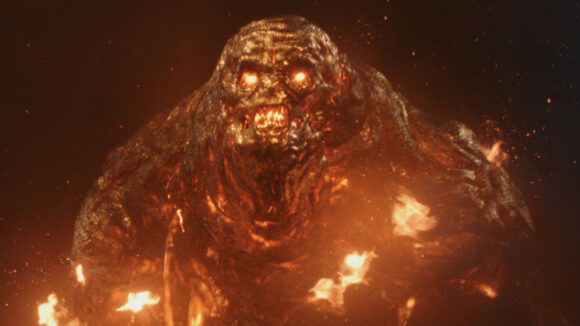
‘Spider-Man Far From Home’: How Do You Animate a Fiery Creature…That Grows?
During director Jon Watts’ Spider-Man: Far From Home, Spider-Man (Tom Holland) faces several elemental threats – beings made up of water, fire, and other natural phenomena. In Prague, he and new superhero Mysterio (Jake Gyllenhaal) take on a fire elemental, which in the film is modeled after the Marvel comic book villain Molten Man.
The battle sees Spider-Man, in a brand-new stealth black suit, and Mysterio, who can fly, take on the creature (which – SPOILER ALERT – is later revealed to be only one of many illusions conjured up by Gyllenhaal’s character).
So how do you approach the animation of a giant fiery creature that also grows as it consumes metal, and have superheroes attack it, too? Animation supervisor Raphael A. Pimentel, from Luma Pictures, the studio behind the work, breaks it down for Cartoon Brew.
First, start with wedges
Pimentel says that discussions on Molten Man began with the director and overall visual effects supervisor Janek Sirrs. “The initial brief was to have Molten Man not necessarily be a ‘man,’ but be a creature, more of a creature-like character,” said Pimentel, who worked with Luma Pictures visual effects supervisors Brendan Seals and Kevin Souls on the project.
To work out how Molten Man should move, Luma created ‘wedges’ of different actions for the creature. These took into account the posture and scale. “Because he’s not a man,” said Pimentel, “that means he needed to be unique and have some sort of C-curve, essentially, to his spine and walk with difficulty based off of his mass changes. During the sequence he consumes metal and changes scale. So we did some wedges to show that constant growth.”
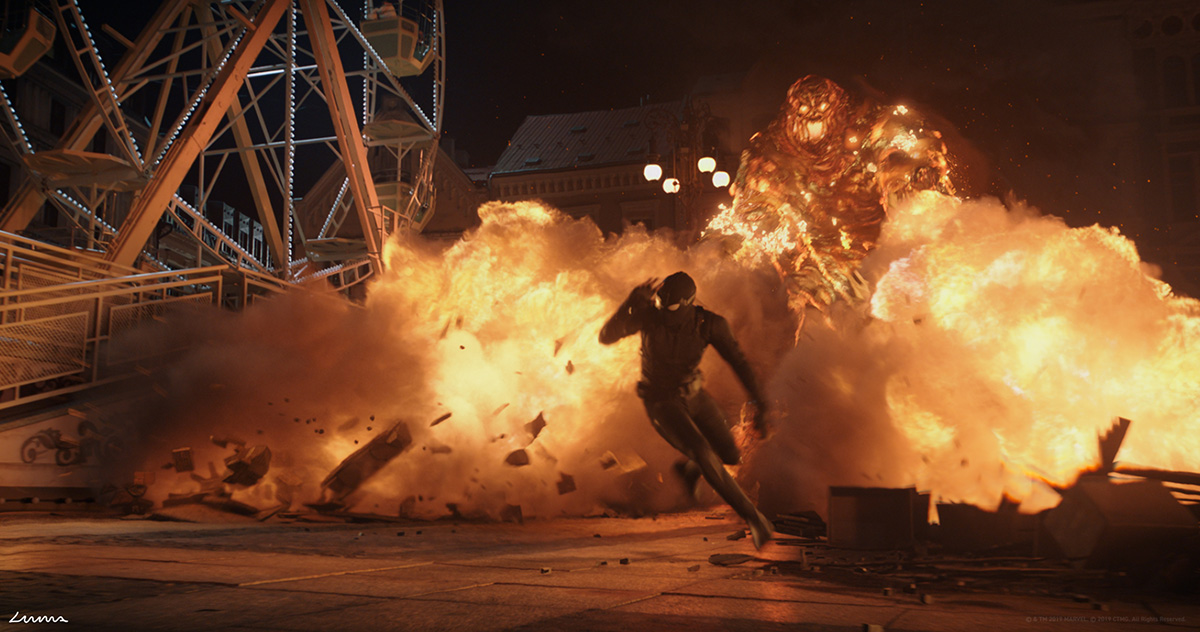
“I then sent over to Jon [Watts] and Janek [Sirrs] about 20 or 30 styles of walks,” adds Pimentel. “There were a few that Jon responded positively to, which had definitely more of the ‘creature’ vibe. What we ended up with was Molten Man starting more upright at the very beginning of the sequence when he’s lighter, and as he consumes metal and gains mass, he becomes more hunched and also slower.”
Luma used some in-house motion capture data to start on the walk cycles (much of that was Pimentel himself – “I feel like it saves time because I tend to know what the client is looking for,” he said). Production also had a stunt performer in motion capture gear act out Molten Man, which Luma used as well.
Armed with an approach to how Molten Man would behave – as well as a cg Spider-Man and Mysterio – Luma Pictures began the animation process. Some of the battle would be shot on a set, but a lot of it relied on digital set extensions and re-creations. “The animators would animate using the provided plate photography and then as we needed to fly out of the plate photography and tilt more and pan more, we would go out of the plate and go into a cg background,” explained Pimentel.
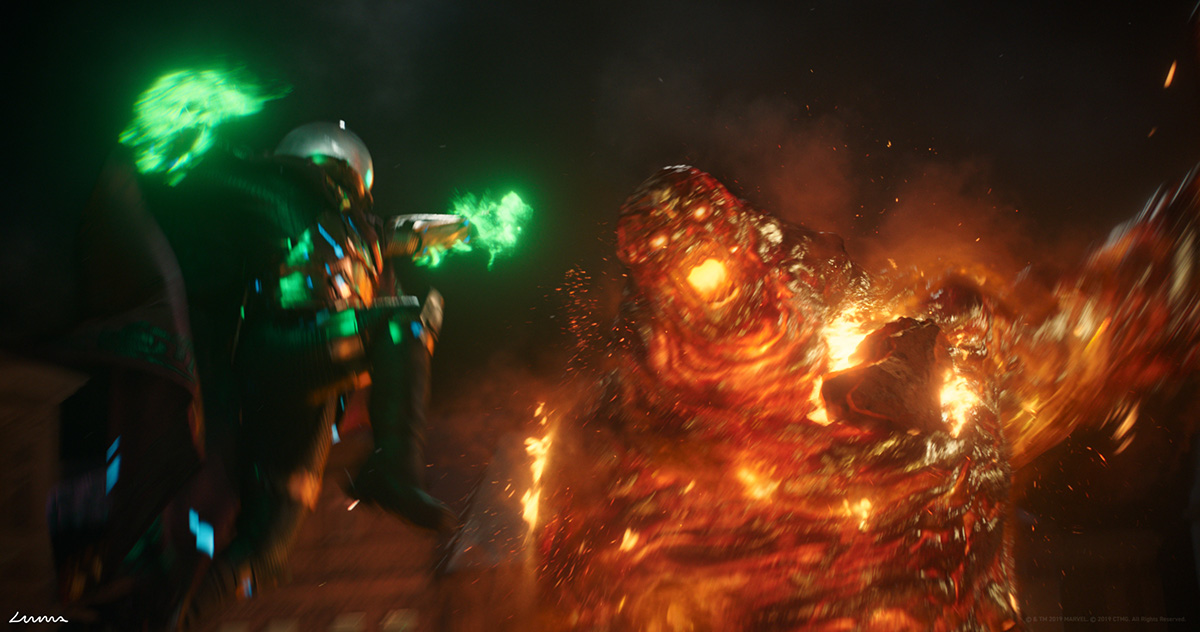
An animation and effects-driven character
Animators were able to drive the major motions of the Molten Man creature, but some of its most important attributes came from a lava and fiery filled surface. Animation, however, still had a role to play in what effects would be seen in the final shots. “He was the heaviest character effects-wise that we’ve ever done at Luma,” said Pimentel. “The easiest and quickest way we found to go from animation to effects was to add a lot of triggering controls in animation.”
What this means is that animators had full control of, say, Molten Man’s arm, but then could also scale and trigger different parts of the arm depending on how fast the consumption of metal was happening. “There’s a shot where Molten Man consumes the car,” said Pimentel. “Here, animators would have controllers and specific blend shapes of designated areas that we would trigger in animation, where it would create almost a domino effect of the fingers getting bigger than the palm of the hand, the forearm, wrist area, elbows, and so on, traveling up the chain of Molten Man’s anatomy or arm.”
“The effects team would take these timings and the data that comes from animation and trigger their effects based off of that. The consumption, the particles, or the simulations would be triggered inside of the body or of Molten Man based off of those timings. The effects team would also add fire, smoke, and embers to these areas as metal is being consumed.”
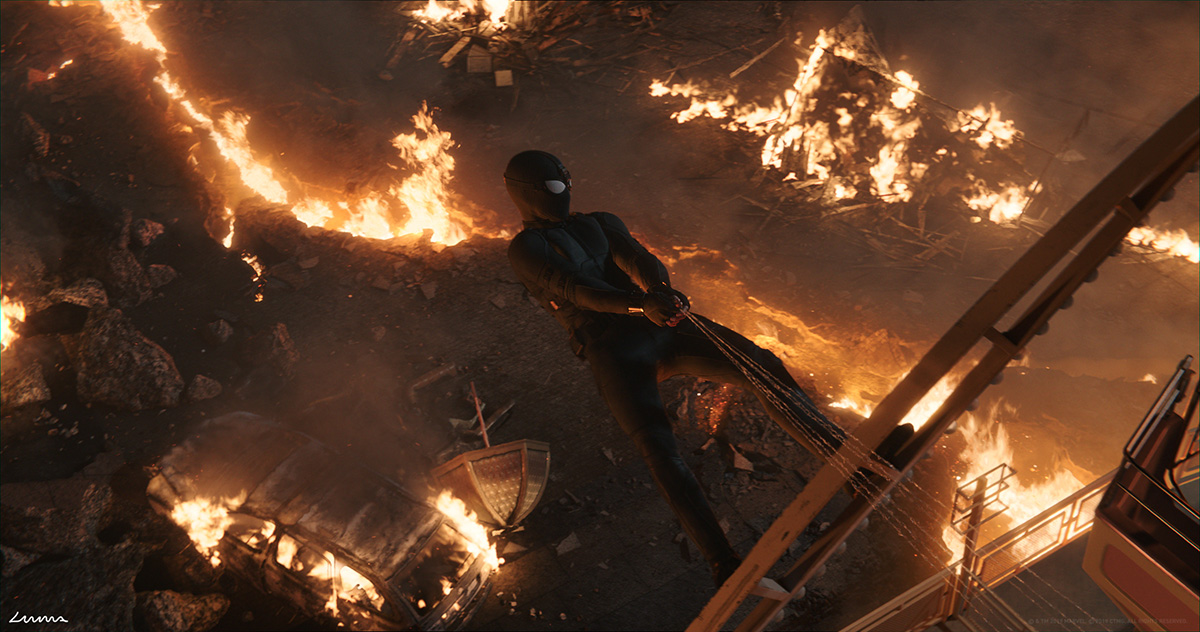
How to keep a superhero sequence somewhat grounded
The battle against Molten Man is a frenetic scene – Spider-Man swings from various structures in his new black stealth suit, and Mysterio is able to fly around the scene. But Luma tried, as much as possible, to maintain camera moves and character moves that behaved in ways that could only be filmed with real cameras.
“I try to always ground our cg cameras in real-world physics,” said Pimentel. “That is like, CG 101 or Animation 101. You must ground the camera so it ties in with the rest of the film. Now, that’s much easier said than done, because you have these characters flying all over the place and battling and you have to be at three places at one time. But the first step I take with the team is replicating the camera rigs that were used on set. Janek Sirrs gave us a list of cameras that were used, and their limitations. We’d receive crane height limits, pacing of dollies, focal restrictions, and how much the cameras could pan and tilt. This gives us a good starting point of our limitations and on how grounded we need to keep things.”
The animators would try to keep the action within the shot plates as much as possible, but, as noted, much of the action was re-created on cg backgrounds or plates that were stitched together digitally from what had been filmed.
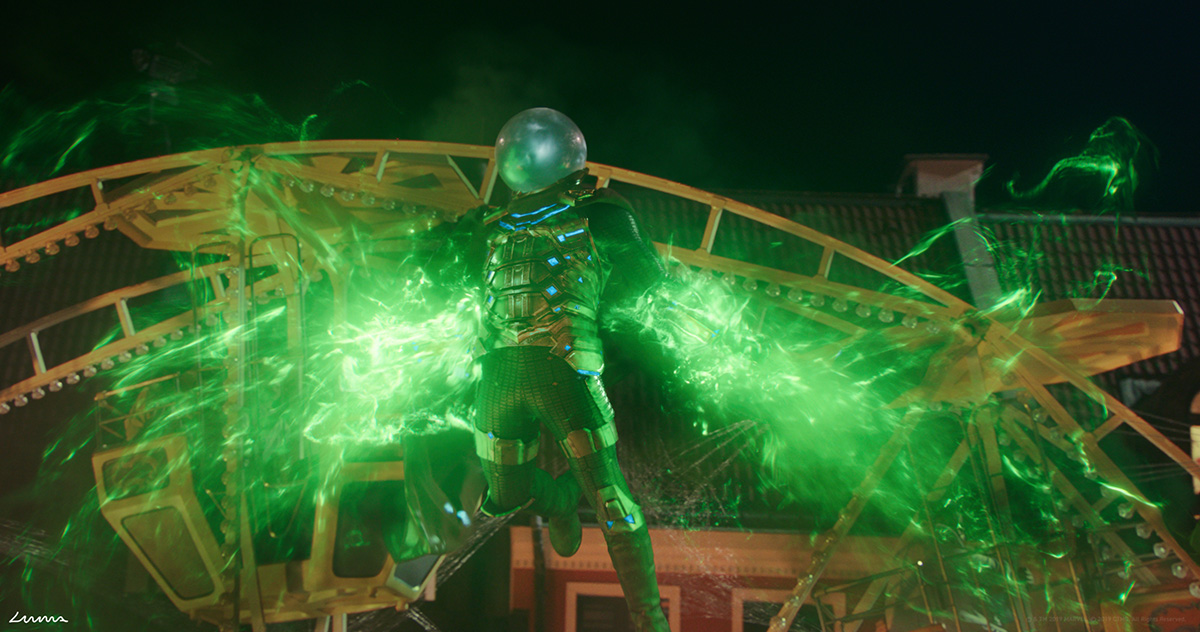
In any case, Pimentel says that he is always trying to make sure the audience can understand the action on screen. For example, for a scene of Spider-Man swinging across the location and throwing a rock at Molten Man, and then Mysterio flying in the opposite direction, the animation supervisor’s main consideration was “to make sure that the rock throw is what is being captured and that the audience is able to read that clearly. It’s not always easy to do, and sometimes it can turn into a very convoluted camera move, but by slowing things down a bit, by compressing the action, by getting the cg characters to be closer to each other, it helps.”
